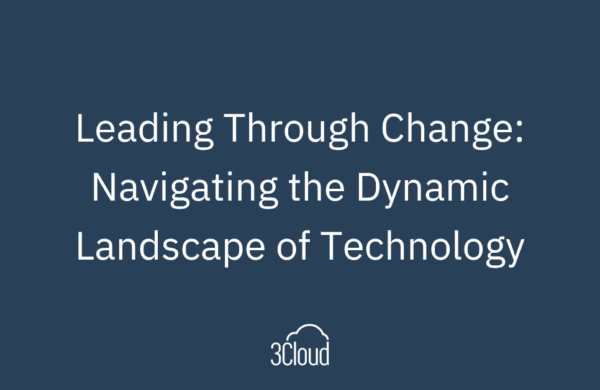As we continue our exploration into the topic of Digital Transformation, let’s take a moment to recap our first two pillars, Engage Customers and Empower Employees. With Engage Customers, we discussed the importance of leveraging data to better understand your customers to provide them with better service and more impactful experiences. With Empower Employees, we outlined ways in which forward-thinking organizations equip their team members with timely information and improved tools to better execute their responsibilities. Both pillars help drive improved business outcomes, which is the hallmark value proposition of the Digital Transformation concept.
In today’s post, we’ll discuss the third pillar, Optimize Operations. Since Henry Ford, the Model T, and the modern assembly line, organizations have realized that an important aspect of competitive advantage is in streamlining key business processes in order to improve efficiency and quality. Streamlined business processes ease friction in the organization, which leads to improved productivity and reduced risk – key factors which can drive desired business outcomes, such as improved financial results.
Data and AI Vital to Operations Optimization
It’s common in today’s modern business world for organizations to employ teams of professionals who focus on optimizing operations. They work on teams with names like “Continuous Improvement” or “Operations Excellence” or are embedded within business functions, such as “Manufacturing Operations” or “Sales Excellence.” They employ programs and standards, such as Six Sigma, ISO 9000/9001, and others, to guide their efforts through industry best practices, and measure their progress among their peers through benchmarking exercises. These efforts have been very effective in many organizations, but there’s still a long way to go, especially when it comes to technology, and specifically Information Technology with Data and Artificial Intelligence (AI).
Technology has always been a critical lever in improving operations, but the emergence and maturation of data and AI enables organizations to reach new heights when deployed effectively. And somewhat surprisingly, even “traditional” companies are leveraging data and AI in innovative ways. Take, for example, one of our clients in the industrial agriculture industry. A key challenge they face is in optimizing irrigation of fields and crops. Success requires orchestration of large equipment and personnel, with significant investments in infrastructure and resources alike. What was traditionally done through basic measurements and gut feel, based on experience, is now being driven by data and AI. This is a transformation which will yield massive benefits and solidify the corporation’s place as a leader in its field.
Modern Reporting Enhancing Efficiency Across Industries
Data and AI not only drive operations optimization in the agricultural industry, but in the transportation industry, too. Imagine the challenge of coordinating thousands of busses and thousands of routes, and the costs associated with even slight improvements in efficiency, or the converse, declines in efficiency. Not only do efficiency declines increase cost, they impact customer satisfaction, too. Thus, the imperative to ensure top-notch performance in transportation with another 3Cloud client. This solution leveraged huge amounts of data, including sensor data, in a centralized platform which enabled deeper insights, which led to improved scheduling and cost savings.
Predictive Analytics, Demand Forecasting Driving Industrial Innovation
The examples above show the power in leveraging data and AI to improve operations. There are many more 3Cloud use cases across industries that further illustrate this point. Take healthcare, for example. One of our clients is exploring how advanced analytics can improve wait times at the ER, leading to more efficient patient care and improved outcomes (including patient satisfaction). Manufacturing is another industry hyper focused on optimizing operations. Another of our clients is investing heavily in “Smart Manufacturing” which will outfit legacy equipment on the shop floor with IOT sensors, enabling improved asset utilization and improved quality. A common manufacturing example is around predictive maintenance – preventing equipment failure by tailoring repair times and types to ensure ongoing performance.
There are certain patterns common across industries, as well. For example, demand forecasting, which may be used to drive improvements in key business processes, such as ordering, workforce planning, growth, and more. Solutions like demand forecasting rely on historical data and advanced machine learning algorithms to create models which provide predictions on future events and help guide decision makers. It’s one of the countless ways industries across the board are using technology to reimagine operations.
If you’re well on your way in this journey, our team of experts can help you implement solutions. If you’re still in the planning, or even pre-planning stage, we can help there too. Contact us today to learn more.





